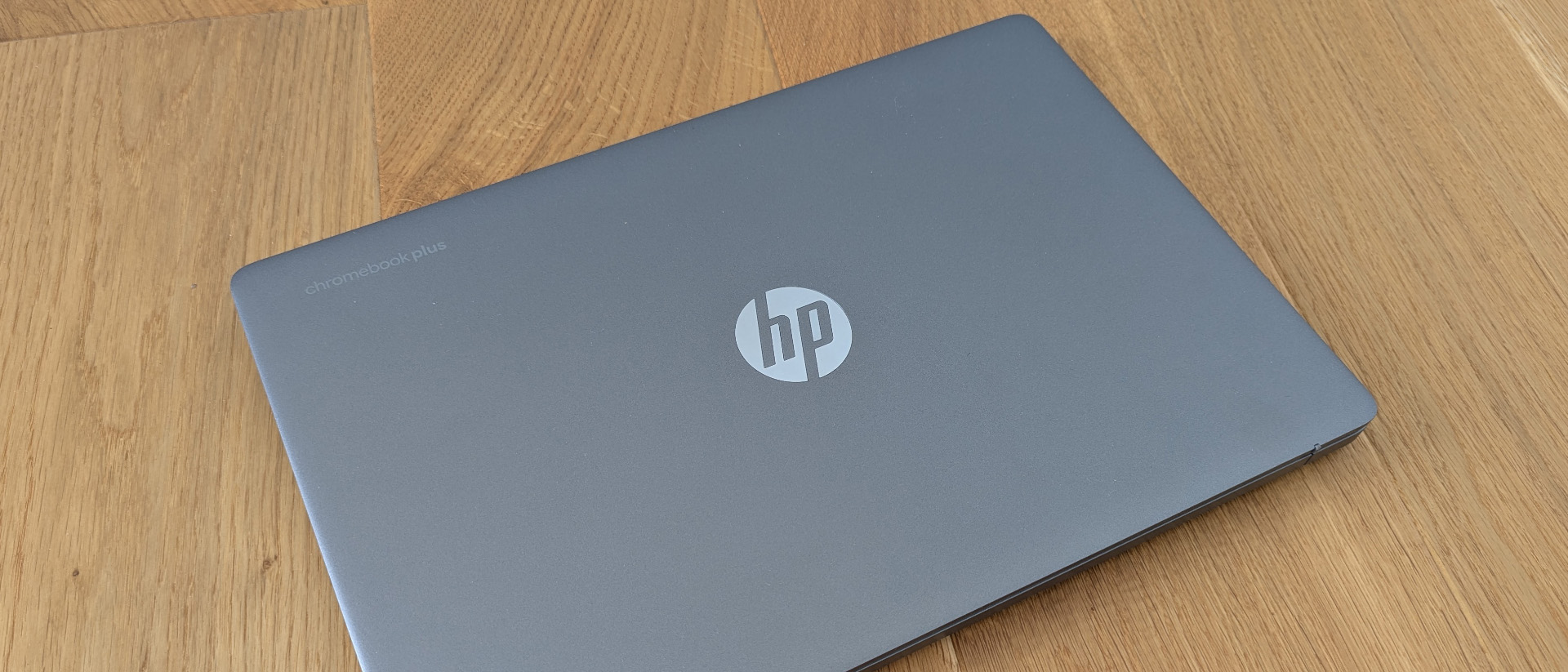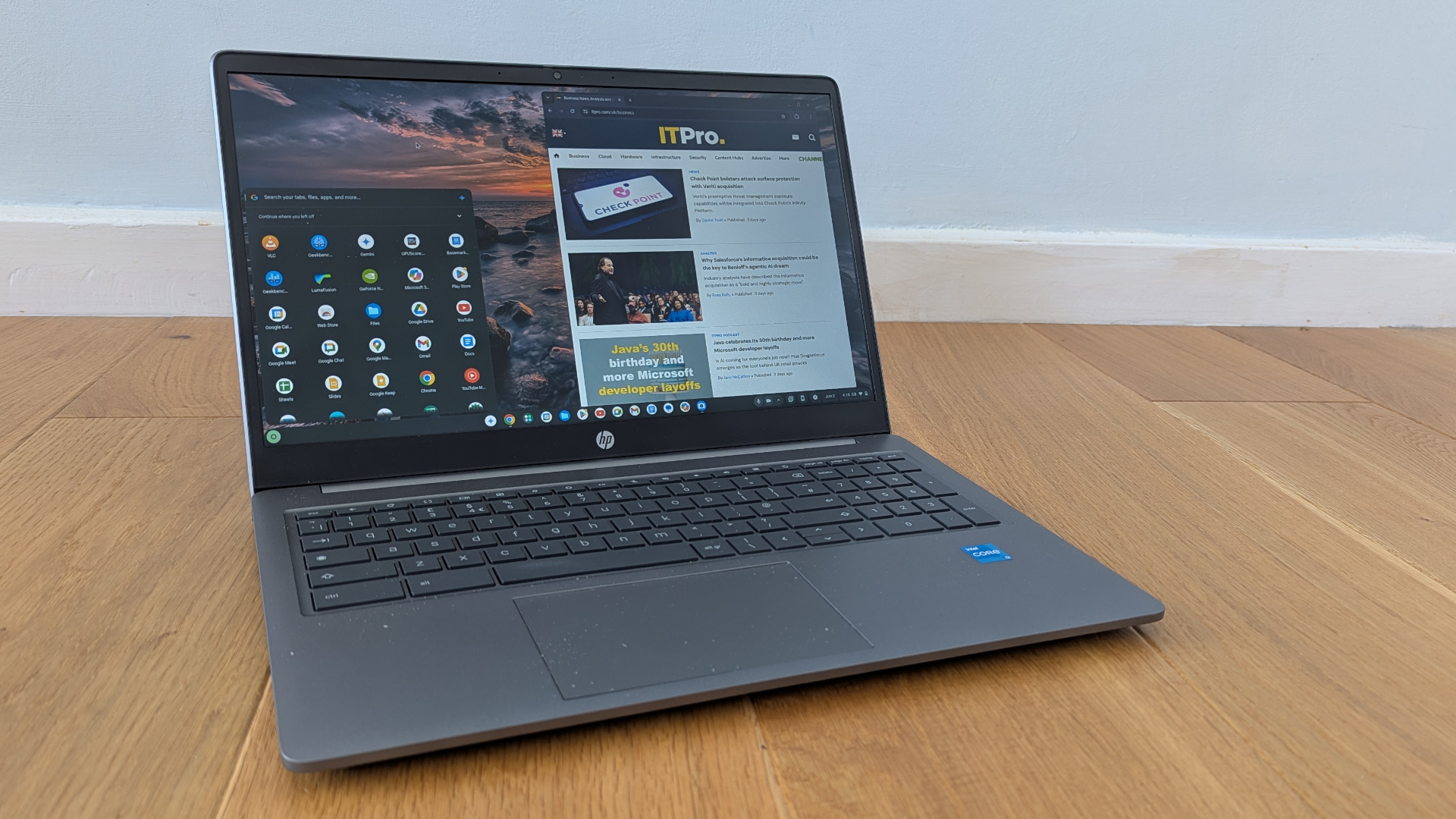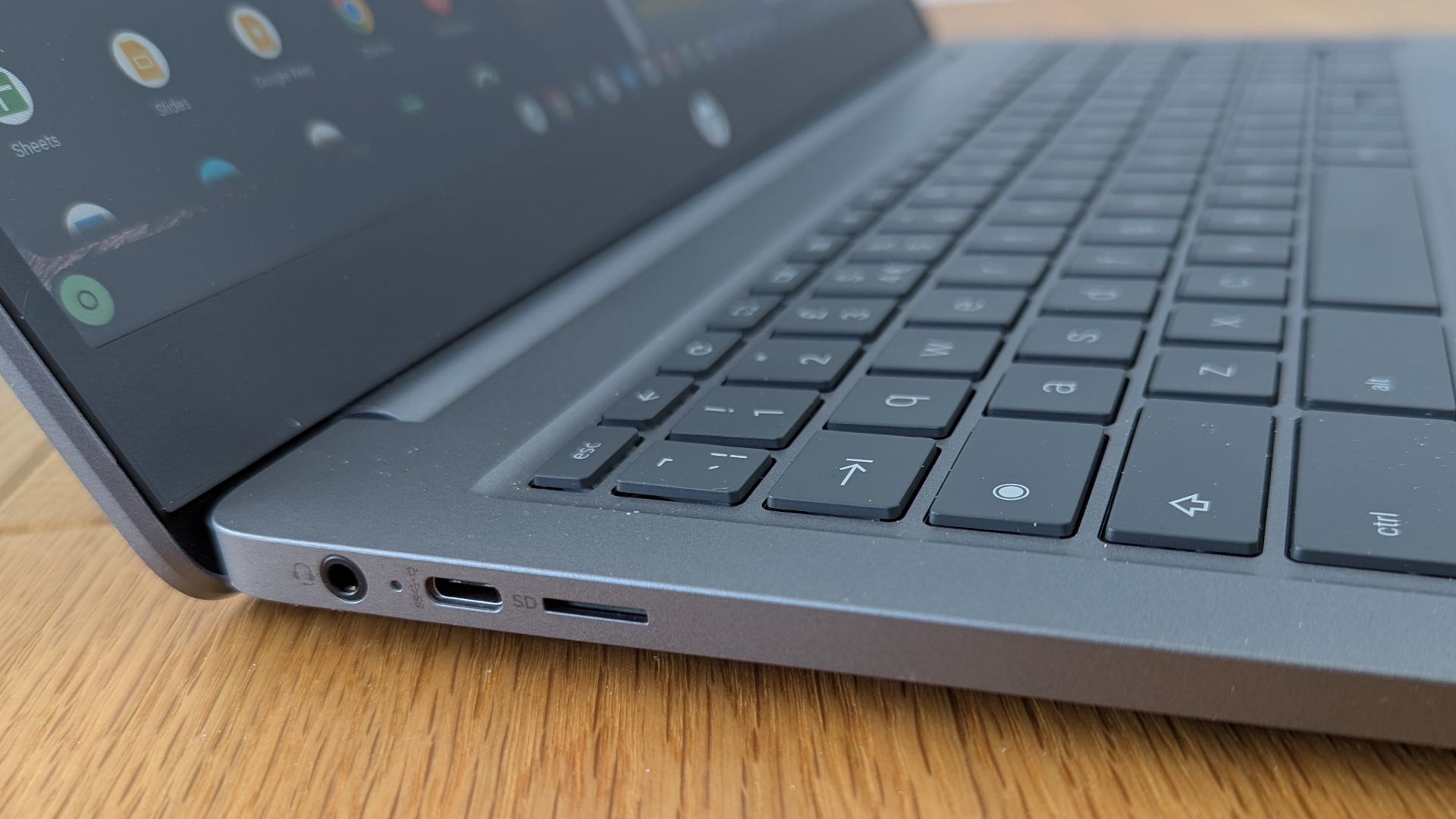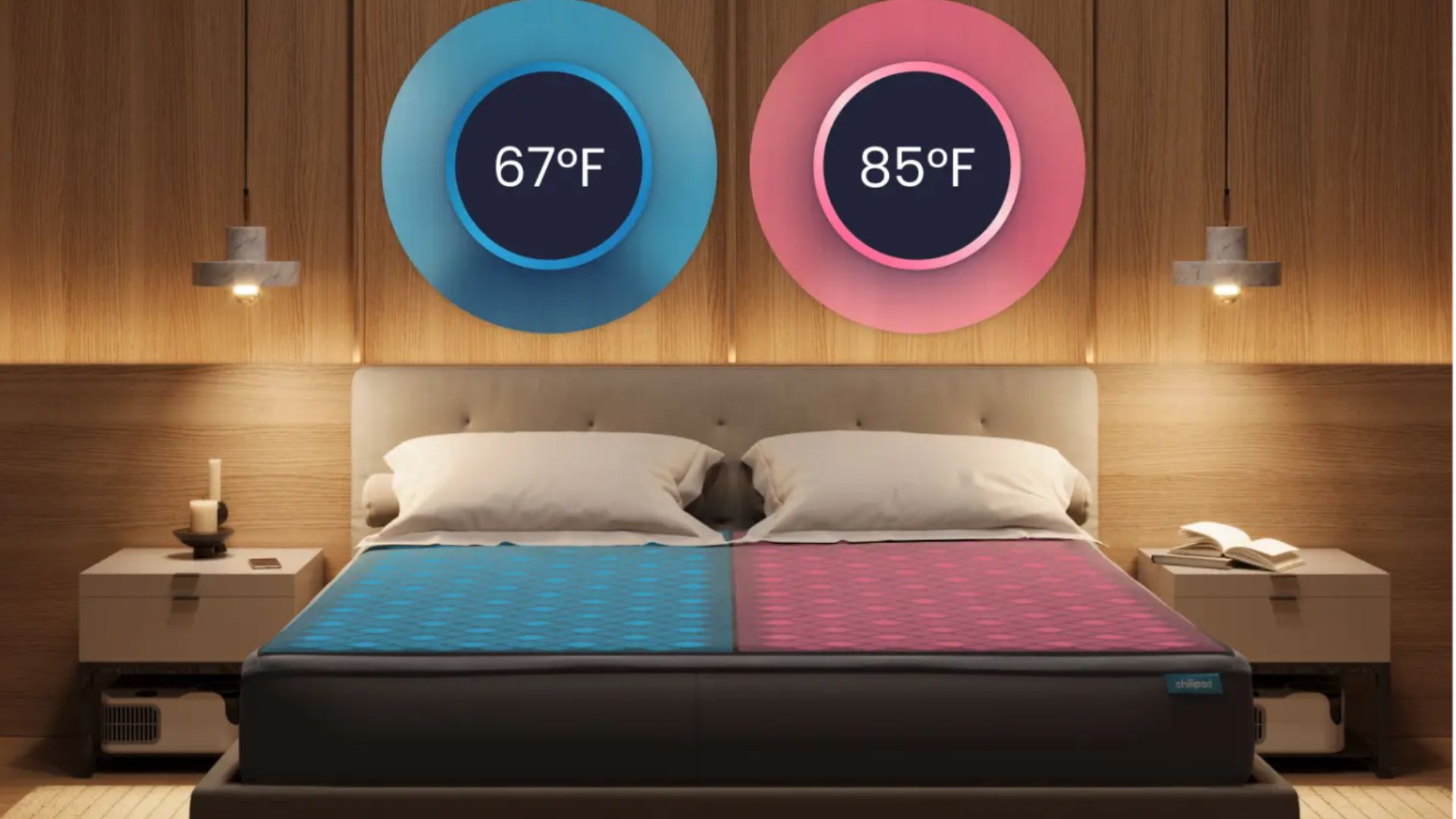HP Chromebook Plus 15a review

In some respects, the HP Chromebook Plus 15a-nb0004na exemplifies what hasn’t quite worked about Google’s Chromebook Plus initiative. Google promised Chromebooks with a bit extra; Chromebooks built for business and enthusiast users, with a decent minimum spec to enable more demanding applications and a more premium look and feel. Yet some of the models we’ve seen in the last eighteen months have been disappointingly bog standard, meeting Google’s minimum requirements, but rarely bothering to exceed them. The HP Chromebook Plus 15a is about as basic as a Chromebook Plus can get.
Luckily, it has two things going for it: it’s still surprisingly usable and it’s also very cheap. While there are stores selling it for £399, you can also find the Chromebook Plus 15a on sale for under £300. For a small business needing a small fleet of simple, cost-effective laptops, this Chromebook Plus might actually make sense.
(Image credit: Future)
HP Chromebook Plus 15a: Design
There’s little about the Chromebook Plus 15a’s design that is going to set hearts racing. It’s a straightfoward plastic clamshell in a silver metallic finish, with a dark grey keyboard and a chunky dark grey bezel around the screen. Even at the sides this is 8mm thick when added to the edge of the lid, rising to 11m at the top and 22m at the bottom. The laptop has a 362.6 x 241.5mm desktop footprint and is only just under 20mm thick.
Still, dull and businesslike is a far cry from cheap-looking or ugly, and the Chromebook Plus 15a passes muster as a work device. At 1.73Kg it’s not exactly light, but nor is it heavy enough to weigh you down on the daily commute. There’s some flex on the base when pressure is applied from the corners, and even more in the screen, yet the fit and finish is reasonably good and the laptop feels robust enough when closed. It’s all rather basic, but functional.
Basic also describes the connectivity, with just two USB Type-C ports and one Type-A, and none going beyond USB 3.2 Gen 1 5Gbits/sec speeds. There’s no HDMI output, just the 3.5mm jack for a headset and a micro SD card slot, so you’ll need a USB-C dock or adaptor if you want to use an external screen. Also, one Type-C port will be occupied while the Chromebook’s charging.
First impressions of the keyboard aren’t that positive. The keys are large and flat, but the caps wobble left to right and up and up and down when you apply the lightest touch. However, there’s no bounce in the deck while you’re typing and the action is light and consistent across the whole keyboard. Given a few hours you can reach a decent typing speed. The layout is also pretty good by Chromebook standards, though HP has yet to update this model with the new Quick Insert key. You even get a numeric pad, navigation keys, and even a Delete key, albeit one in an unconventional position in the second row down.
There’s no mistaking the surface of the touchpad for anything but plastic, but that’s really the worst thing you can say about it. The surface is reasonably smooth, and it doesn’t have any problems tracking pointer movement or multi-touch gestures to zoom or scroll. Again, we’re in budget territory but everything is usable.
HP Chromebook Plus 15a: Display

(Image credit: Future)
By this point, you might suspect that HP will have indulged in some cost-cutting on the screen. Well, you’d be right. The IPS display struggles to maintain color vibrancy and contrast beyond a fairly narrow viewing angle, while its brightness maxes out at 265.6cd/m2. It still looks good when you’re working in the evening or in a gloomy room, but less so when you’re trying to work outside or near a window.
It only covers 60% of the sRGB color gamut and a woeful 42.7% of DCI-P3, while color accuracy isn’t good enough for anything beyond basic image editing or simple business graphics. Meanwhile, the 1920 x 1080 Full HD resolution means you’re not getting the cleanest lines or the smoothest text when stretched across a 15.6in screen.
All the same, it’s far from the worst screen we’ve seen at this price point. In fact, it’s fine for simple productivity work, even with multiple windows on screen or running apps side-by-side in split-screen mode.
Audio is much what you’d expect from a budget laptop: clear and fairly listenable at lower volumes, brash and rough on the ears past the halfway point. The video captured by the 1080p webcam is merely adequate. While colors are natural and the exposure is reasonably controlled, there’s something fuzzy about the image, even when you have plenty of daylight to work with.
HP Chromebook Plus 15a: Performance
Performance is arguably the Chromebook Plus 15a’s biggest problem. Its Intel Core i3 N305 processor wasn’t really fast enough to deserve its Core i3 name when it launched over two years ago, and now that other manufacturers are moving to the newer 14th Gen Intel Core 3 line-up, it’s starting to look even slower. The Chromebook Plus 15a’s Geekbench 6 scores of 1149 (single-core) and 4347 (multi-core) look poor when compared to the Samsung Galaxy Chromebook Plus (2072 and 7608) or even the aging Lenovo IdeaPad Flex 5i (1809 and 5020). True, the Samsung has a Core 5 120U, but the Lenovo relies on a fairly modest Core i3-1215U. Even Acer’s new Chromebook Plus 516, which uses a Core 3 100U, scores higher with 1916 and 5670.
Nor is 3D performance up to scratch. Indeed, the Chromebook Plus 15a’s score in 3D Mark’s Wild Life test, 4340, puts it way behind the Lenovo at 7041 and the Acer at 8054.
This could be a deal breaker for more ambitious Chromebook users, but it shouldn’t be for more basic productivity workloads. You can still run the Chrome browser with a dozen tabs open or work with several Google Workspace apps running, and the Chromebook Plus 15a will not feel slow.
Given that the Core i3 N305 is an energy-efficient processor, the Chromebook Plus 15a’s battery life is underwhelming. Blame the big IPS display, but our video rundown test saw the 58Wh battery peter out after eight hours and 42 minutes. That’s a lot less than the Galaxy Chromebook Plus at 11 hours and 56 minutes, and shy of the nine hours delivered by the old Acer Chromebook Plus 515. Both have similarly-sized 15 to 15.6in screens.

(Image credit: Future)
HP Chromebook Plus 15a: Is it worth it?
Were it closer to £500 there would be little reason to recommend the Chromebook Plus 15a. The design and screen show signs of a tight budget. In terms of processing power, it’s yesterday’s news. But when you put it in the context of a sub-£300 price point, it looks a little more enticing. It’s a functional productivity device you can pick up for peanuts. Most sensible organizations, their IT teams, and employees would rather spend more and get a better Chromebook Plus, but when budgets are tight and you’re working on a shoestring, that might be a luxury you can’t afford. With a few of these and some Workspace accounts you could still do business – and take advantage of Google’s Chromebook Plus-exclusive Gemini AI features. You won’t be living the Chromebook Plus dream, but then you won’t be paying any premium prices either.
HP Chromebook Plus 15a specifications
|
Display |
15.6-inch 1,920 x 1,080 IPS, 60Hz refresh rate |
Row 0 – Cell 2 |
|
Processor |
Intel Core i3 n305 octa-core, 3.8GHz |
Row 1 – Cell 2 |
|
GPU |
Intel UHD Graphics |
Row 2 – Cell 2 |
|
RAM |
8GB LPDDR5 |
Row 3 – Cell 2 |
|
Ports |
2x USB 3.2 Gen 1 Type-C, USB 3.2 Gen 1 Type-A, MicroSD card reader |
Row 4 – Cell 2 |
|
Storage |
128GB eUFS |
Row 5 – Cell 2 |
|
Connectivity |
Wi-Fi 6 (802.11ax), Bluetooth v5.3 |
Row 6 – Cell 2 |
|
Weight |
1.73Kg |
Row 7 – Cell 2 |
|
Dimensions |
362.6 x 241.5 x 19.8mm |
Row 8 – Cell 2 |
|
Battery Capacity |
58Wh |
Row 9 – Cell 2 |
|
Operating System |
Chrome OS |
Row 10 – Cell 2 |
Source link










